Yes, You can Use an Orbital Sander as a Buffer or to polish your car but a dedicated buffer may be preferable for larger or more delicate projects.
As someone who has been working with power tools for years, there’s no doubt that they are quite different in their purpose and design. However, that doesn’t mean an orbital sander can’t be used as a buffer in a pinch.
Key Takeaways:
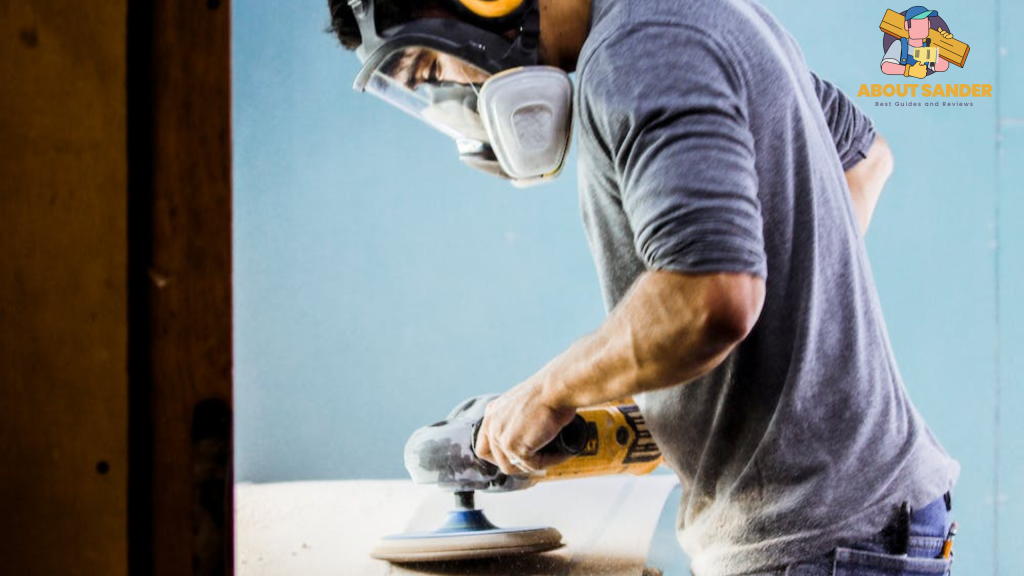
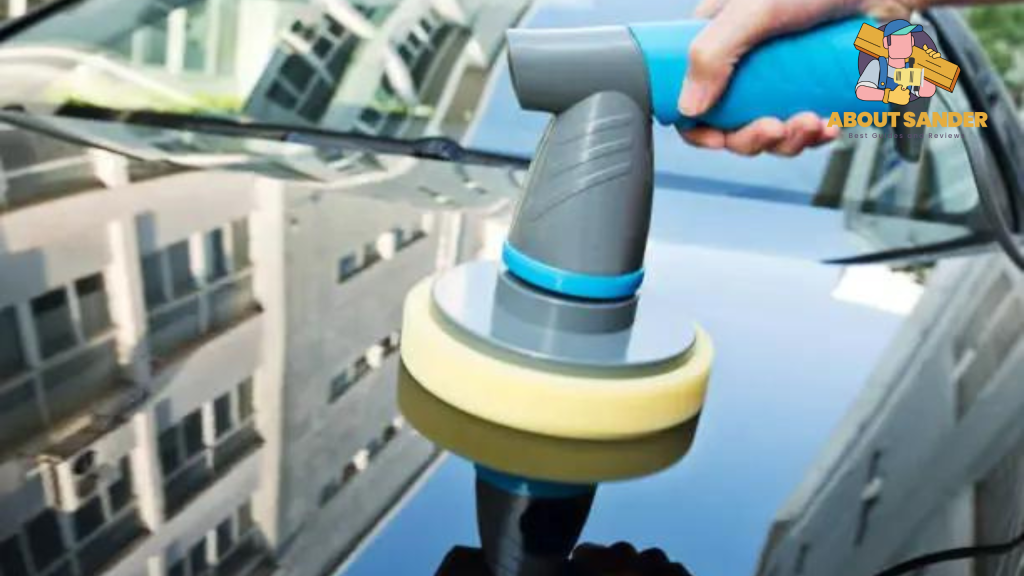
- You can use an orbital sander as a buffer with a few adjustments.
- Buffing requires a different pad type than sanding, so make sure you have the right one.
- Orbital sanders are not ideal for large surface areas but work well for smaller projects.
- You’ll need to adjust the speed and technique to avoid damaging the surface you’re working on.
- While a dedicated buffer may be preferable for larger or more delicate projects, an orbital sander can be a versatile and useful tool in your DIY arsenal.
Can You Use an Orbital Sander as a Buffer? Exploring the Versatility of Your Power Tools
As someone who has spent years working on DIY projects, I know power tools can be incredibly versatile if you know how to use them. One tool I always have on hand is an orbital sander, a type of power tool designed to help you smooth and sand surfaces quickly and easily.
What is an Orbital Sander?
Unlike a belt sander or a random orbital sander, which both move in circular patterns, an orbital sander moves in an elliptical motion. This motion helps prevent the tool from leaving swirl marks on the surface you’re sanding, making it ideal for use on delicate surfaces like furniture and cabinetry.
| Features | Pros | Cons |
| Elliptical motion | Prevents swirl marks on delicate surfaces | Not as effective on large surface areas |
| Hook-and-loop system | Easy to switch out sanding pads. | Limited range of compatible pads |
| Lightweight | Easy to maneuver | Can cause hand fatigue with extended use. |
| Variable speed | Allows for customization of sanding speed | May require additional costs for models with variable speeds. |
| Dust collection system | Reduces airborne particles and makes clean-up easier | Can clog easily and may require frequent emptying or cleaning. |
| Multiple grip positions | Increases comfort and control during use | May is not compatible with all hand sizes or grip preferences. |
How Does an Orbital Sander Work?
An orbital sander typically uses a sanding pad between 4 and 6 inches in diameter. The pad is attached to the sander using a hook-and-loop system, which makes it easy to switch out different grits of sandpaper. When you turn on the sander, the pad moves in an elliptical motion while simultaneously spinning around its center.
When Should You Use an Orbital Sander?
Orbital sanders are great for various DIY projects, from sanding down rough spots on furniture to smoothing out a new coat of paint. Because they’re relatively lightweight and easy to maneuver, so they’re ideal for smaller projects. However, if you’re working on a large surface area, opt for a larger sander or rent a floor sander.
What About Buffing?
Now, let’s return to the question: Can You Use an Orbital Sander as a Buffer? The short answer is yes but with a few caveats. Buffing requires a different pad type than sanding, and ensuring you have the right one for the job is important. A buffing pad is typically made of wool or foam and is designed to help spread polishing compounds evenly across a surface.
How to Use an Orbital Sander as a Buffer
To use an orbital sander as a buffer, you’ll need to swap out the sanding pad for a buffing pad. Once you have the right pad, you’ll also need to adjust the speed and technique to avoid damaging the surface you’re working on. Start by applying a small amount of polishing compound to the surface and then turn on the sander quickly.
Should You Use an Orbital Sander or a Dedicated Buffer?
While an orbital sander can certainly be used as a buffer in a pinch, a dedicated buffer may be preferable for larger or more delicate projects. Buffers are designed to operate at higher speeds than sanders, which can help you achieve a smoother finish with less effort.
What do you need to know about Buffer?
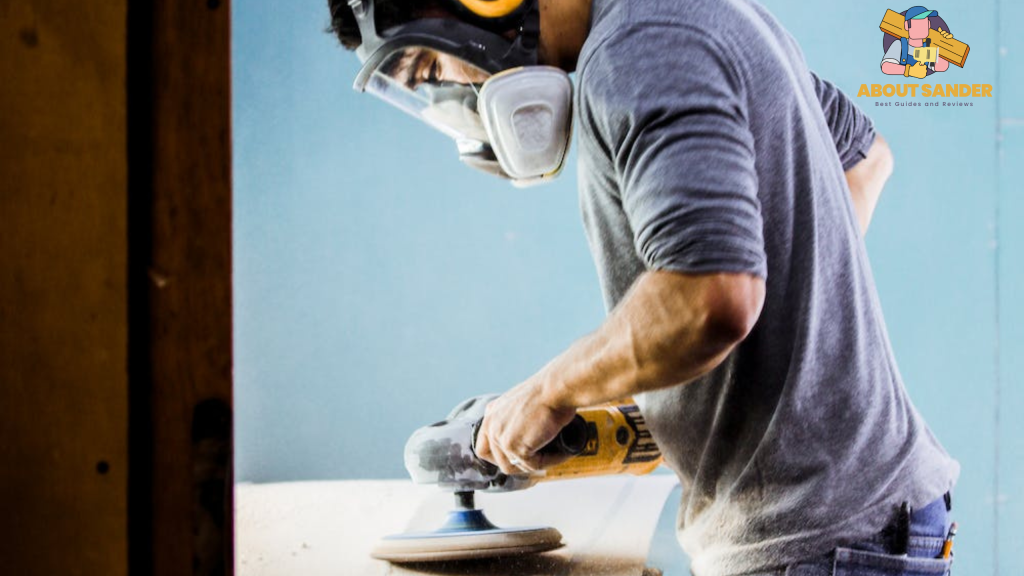
As someone who has spent much time working with power tools, I often get asked whether an orbital sander can be used as a buffer. While they may look similar, buffers are quite different from sanders. In this article, I’ll explain what a buffer is, how it works, and whether you can use an orbital sander as a buffer.
What is a Buffer?
A buffer, a polishing machine or polisher, is a power tool to buff and shine various surfaces. Buffers are commonly used on cars, boats, and other vehicles, as well as on floors and countertops. Unlike sanders, designed to remove material from a surface, buffers use a soft pad and a polishing compound to bring out a high shine.
| Features | Pros | Cons |
| Rotating Soft Pad | Using the wrong pad or polishing compound can lead to damage. | Requires skill to use properly. |
| Foam or Wool Pad | Gentle on surfaces | Can cause hand fatigue with extended use. |
| Hook-and-Loop System | Easy to use | Using wrong pad or polishing compound can lead to damage. |
| Rotary and Dual Action Types | Dual action buffers are less likely to damage surfaces | Rotary buffers can be quite powerful and require more skill. |
| RPM Range of 1,000-3,000 | Achieves professional-level results | Not suitable for heavy-duty polishing. |
| Used for polishing cars, boats, floors, and countertops | Achieves swirl mark-free results | Not suitable for removing scratches or blemishes. |
How Does a Buffer Work?
Buffers use a soft pad that rotates at high speed, typically between 1,000 and 3,000 revolutions per minute (RPM). The pad is usually made of foam or wool and is attached to the buffer with a hook-and-loop system. The buffer is then turned on, and the pad rotates in a circular motion while the user applies a polishing compound to the surface.
Types of Buffers
There are two main types of buffers: rotary and dual action. Rotary buffers have a fixed circular motion and are generally more powerful than dual action buffers, which have a random orbital motion. Beginners often prefer dual-action buffers because they are less likely to damage the surface being polished.
Pros and Cons of Buffers
Buffers have several advantages over sanders. For one, they are designed to be gentle on surfaces, making them less likely to leave swirl marks or other damage. Buffers are also relatively easy to use, and with a little practice, you can achieve professional-level results. However, buffers can be quite heavy and may cause hand fatigue with extended use.
Can You Use an Orbital Sander as a Buffer?
Can you use an orbital sander as a buffer? While it’s technically possible, I wouldn’t recommend it. Orbital sanders are not designed for polishing, and using one as a buffer could damage the polished surface. Additionally, sanders usually have a lower RPM range than buffers, which means they may need help to achieve the same level of shine.
Final Thoughts About Buffer
Buffers are essential for anyone who wants to achieve a high shine on their car, boat, or other surfaces. While they may look similar to sanders, they are designed for different purposes. If you’re in the market for a buffer, I recommend researching and finding one that fits your needs and budget.
What is the process of using an Orbital Sander as a Buffer?
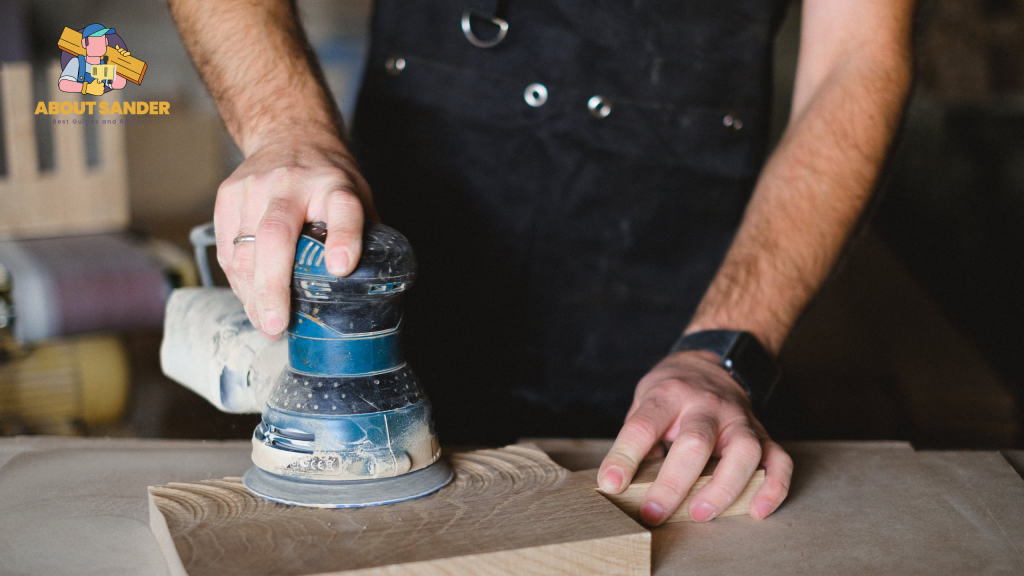
As a DIY enthusiast, you may have wondered whether using an orbital sander as a buffer is possible. The good news is, you can! With a few tweaks, your orbital sander can become a buffer, saving you from purchasing an extra tool. This article will discuss using an orbital sander as a buffer.
Step 1: Choose the Right Sandpaper
Before you begin, ensure you have the appropriate sandpaper for the task. Sandpapers that are too coarse or too fine won’t work correctly and may even cause damage to the surface you’re trying to buff. It’s best to use sandpaper with a grit of 320 or higher.
Step 2: Install the Sandpaper on the Orbital Sander
Now that you have the right sandpaper, it’s time to install it onto your orbital sander. Ensure it’s secure and the sandpaper is centered on the pad. If it needs to be centered correctly, it will create uneven results.
Step 3: Attach a Polishing Pad
After securing the sandpaper, attach a polishing pad to the orbital sander’s hook-and-loop pad. The polishing pad is an essential accessory for buffer mode, as it helps to distribute the polishing compound evenly.
Step 4: Apply Polishing Compound
Apply the polishing compound to the surface you want to buff and spread it evenly. The polishing compound works to remove any scratches or blemishes on the surface.
Step 5: Buff the Surface
Once the polishing compound is applied, you’re ready to begin buffing. Turn on the orbital sander and slowly buff the surface in a circular motion. Make sure to apply even pressure and avoid staying in one spot for too long, as this can cause damage.
Step 6: Clean the Surface
After buffing, clean the surface with a clean cloth to remove any residue. You may need to repeat the process if the surface isn’t polished to your liking. By following these simple steps, you’ll be able to achieve professional-looking results without having to invest in an extra tool.
Can You Use an Orbital Sander as a Buffer to Detail Your Car?
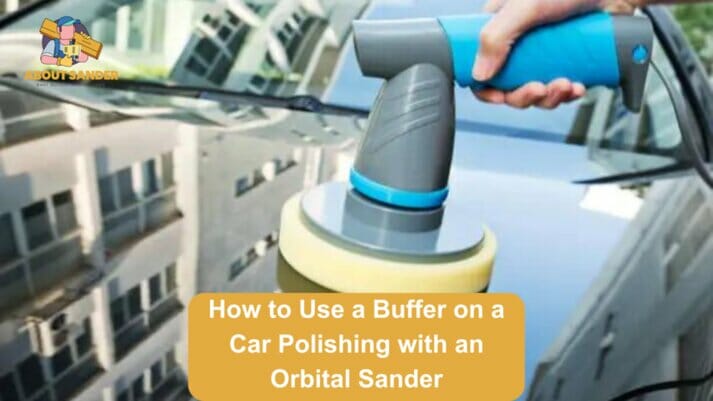
Car detailing is critical for maintaining your vehicle’s appearance and value. While many tools are available to help with car detailing, the question remains: can you use an orbital sander as a buffer for your car? The answer is yes but with some precautions. In this article, we’ll cover the steps for using a buffer for car detailing and an orbital sander for car detailing.
Using a Buffer for Car Detailing
A buffer is an excellent tool for car detailing. It’s designed specifically to polish and buff the surface of your car to a high shine. Here are the steps to follow when using a buffer for car detailing:
Step 1: Choose the Right Pad
The first step is to choose the right pad for your buffer. There are different types of pads available, depending on the task. For car detailing, it’s best to use a foam pad that’s soft and gentle on the car’s paintwork.
Step 2: Apply Polishing Compound
Apply the polishing compound to the surface you want to buff. Working in small sections is best to ensure the polish is evenly applied.
Step 3: Buff the Surface
Turn on the buffer and start buffing the surface in a circular motion. Make sure to apply even pressure and avoid staying in one spot for too long, as this can cause damage to the paintwork.
Step 4: Clean the Surface
After buffing, clean the surface with a clean cloth to remove any residue. You may need to repeat the process if the surface isn’t polished to your liking.
Using an Orbital Sander for Car Detailing
While it’s possible to use an orbital sander as a buffer for car detailing, it requires more caution and care. Here are the steps to follow when using an orbital sander for car detailing:
Step 1: Choose the Right Sandpaper
Choose the right sandpaper for your orbital sander. For car detailing, it’s best to use a grit of 320 or higher. Make sure to use sandpaper that’s designed for use on cars to avoid damaging the paintwork.
Step 2: Install the Sandpaper
Install the sandpaper onto the orbital sander, ensuring it’s secure and centered on the pad.
Step 3: Apply Polishing Compound
Apply the polishing compound to the surface you want to buff, and spread it evenly.
Step 4: Buff the Surface
Turn on the orbital sander and start buffing the surface in a circular motion. Apply even pressure and avoid staying in one spot for too long, which can cause damage.
Step 5: Clean the Surface
After buffing, clean the surface with a clean cloth to remove any residue. You may need to repeat the process if the surface isn’t polished to your liking.
Here is the Video guide if you want to see it in detail from an expert.
Safety Considerations
Using an orbital sander as a buffer can be a great way to get a smooth, polished finish on your workpiece. To ensure your safety, as well as the safety of your workpiece, there are a few safety considerations you should keep in mind before attempting to use an orbital sander as a buffer.
1: Eye and Ear Protection
First and foremost, wearing eye and ear protection is essential when using an orbital sander as a buffer. The sander can generate a lot of dust and noise, which can be hazardous to your eyes and ears. Make sure you wear safety glasses and earplugs or earmuffs to protect yourself.
2: Workpiece Stability
Make sure your workpiece is firmly secured before starting the buffering process. An unstable workpiece can cause the sander to jump or bounce, potentially damaging the workpiece or causing injury to the operator.
3: Tool Compatibility
Before using an orbital sander as a buffer, check the manufacturer’s recommendations and ensure the tool is suitable for the job. Not all orbital sanders are designed to be used as buffers, and using an incompatible tool can damage both the workpiece and the tool.
4: Buffing Pad Compatibility
Similarly, using the appropriate buffing pad with your orbital sander is important. Using the wrong pad can result in uneven buffing, damage to the workpiece, or even injury to the operator.
5: Buffing Speed
When using an orbital sander as a buffer, working at a low speed is essential. High speeds can generate excessive heat and cause the buffing pad to wear out quickly, resulting in uneven buffing and potential damage to the workpiece.
6: Workpiece Cleanliness
Ensure your workpiece is clean and debris-free before starting the buffering process. Dirt and debris can become trapped in the buffing pad, causing scratches and damage to the workpiece.
7: Operator Fatigue
Buffing can be a time-consuming process, and it’s essential to take breaks and avoid overworking yourself. Overexertion can lead to fatigue and loss of focus, potentially resulting in injury to the operator or damage to the workpiece.
8: Electrical Safety
Always ensure your orbital sander is properly grounded and the electrical cord is in good condition before use. Damaged cords can be hazardous and increase the risk of electrical shock.
9: Ventilation
Ensure you work in a well-ventilated area using an orbital sander as a buffer. The sander generates a lot of dust, which can be hazardous to your health if inhaled.
10: Proper Storage
After use, always store your orbital sander in a safe and secure location. Ensure the tool is disconnected from the power source and the buffing pad is removed. Storing the tool improperly can increase the risk of injury or damage to the tool. By considering these safety considerations, you can use an orbital sander as a buffer safely and effectively.
FAQs
If you’re wondering about using an orbital sander as a buffer, you might have a few questions in mind. In this section, we’ll address some of the most common FAQs to help you better understand the topic.
1: Can I use any pad for buffing with an orbital sander?
It’s essential to use the right pad for your specific task. Using the wrong type of pad can result in damage to your vehicle’s paint or woodwork. When buffing, it’s best to use a foam pad as it’s gentle and effective.
2: Can I use a high-speed orbital sander as a buffer?
Using a high-speed orbital sander as a buffer is not recommended, as it can be too aggressive and cause damage to the surface you’re working on. It’s best to stick to a random orbital sander, designed to be more gentle and produce less heat, making it safer for buffing.
3: Can I use a buffer on a car without experience?
While you can certainly use a buffer on your car without prior experience, exercising caution and taking your time is essential. Follow the proper steps, use the right equipment, and work slowly and carefully to avoid any potential damage.
4: Is a sander and a buffer the same thing?
No, a sander and a buffer are not the same thing. A sander is used for sanding or smoothing surfaces, while a buffer is used for polishing or shining surfaces.
5: Can an orbital sander be used as an orbital polisher?
No, an orbital sander cannot be used as an orbital polisher. They have different designs and purposes. An orbital sander is used for sanding, while an orbital polisher is used for applying polish or wax to enhance shine.
Conclusion
So, there you have it, folks! The answer to the question, “Can You Use an Orbital Sander as a Buffer?” is a resounding yes. As discussed, orbital sanders can be a viable alternative to traditional buffers for tasks such as car detailing and furniture refinishing. You can achieve the perfect finish with the right technique and tool. So, give it a try, and let us know how it goes!

Why Trust About Sanders?
When it comes to the world of sanding and sanders, you need a trusted source of information and guidance to ensure you achieve those perfect finishes. That's where I come in – I'm Martin, a dedicated sanding enthusiast with a relentless passion for attaining flawless surfaces. With years of hands-on experience in the sanding industry, I've honed my skills and expertise to provide you with the most reliable and accurate insights. What sets me apart is my commitment to excellence. I meticulously handpick each sander after rigorous testing, ensuring that only the best tools make it to your hands. My goal is to empower you with the knowledge and recommendations you need to tackle any sanding task confidently. When you trust About Sanders, you're putting your faith in a seasoned expert who shares your passion for perfection and strives to deliver top-notch information and reviews for every sanding challenge.
